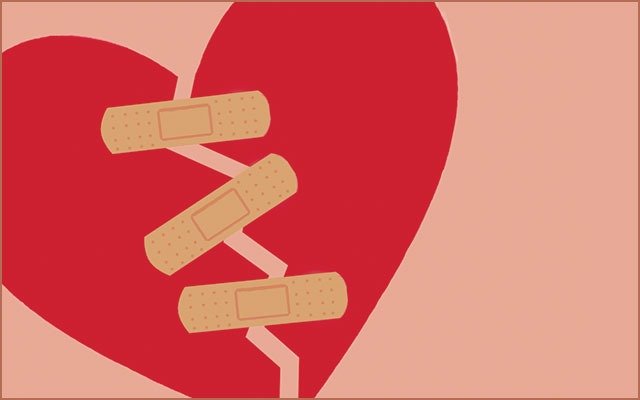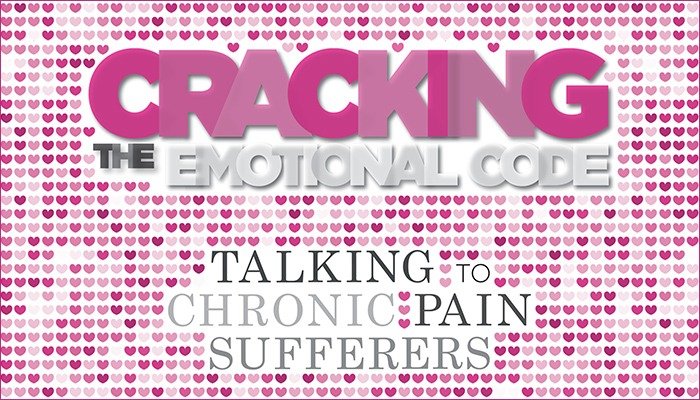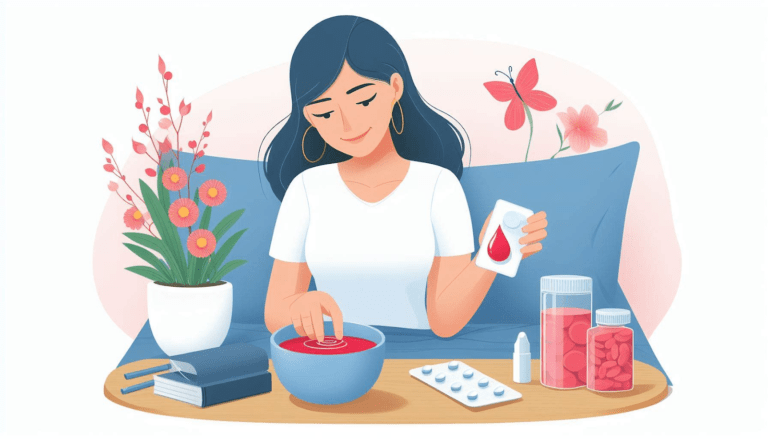Chronic Pain and Domestic Violence

The science behind two public safety & health issues
“I cannot be silent, because what I endured changed my life and wrote on the slate of who I am. I survived to try and help others who were also abused and have intensified chronic pain.” —Leslie Flanagan, survivor of domestic violence living with chronic pain
From a young age, chronic pain shaped Leslie Flanagan’s world, leading to a life that was fraught with stress and isolation.
As a child, Flanagan was diagnosed with von Willebrand disease, a genetic blood disorder caused by a missing or defective clotting protein called Factor VIII. Even a simple shaving cut can bleed profusely because the body cannot create platelets to plug the cut. Flanagan has type 3 von Willebrand disease, which is even more severe; internal bleeding into joints and muscles causes severe pain and debilitation.1 Menstrual cycles include large blood clots, increasing the risk of fainting or even hemorrhaging. The pain in her hands makes it difficult to type or write.
After Flanagan married in her early 20s, her husband began emotionally abusing her, which escalated into physical abuse after she became pregnant. Her husband forced her to have an abortion, a procedure that could have killed her because of her blood disorder. Flanagan desperately wanted the pregnancy and is still haunted by the memory of that day.
She had no reprieve after that tragedy. Violence became a regular occurrence. Without warning, her husband threw furniture, pushed her against walls, shoved her down stairs and kicked her, resulting in concussions, internal bleeding and a broken elbow, ribs and teeth. She recalls that he always justified his action by saying, “This was the only way to teach you a lesson.”
Flanagan saw only one way out: taking her own life. Her attempt failed, but she continues to struggle with thoughts of suicide. “After living with such a high level of pain and very real memories of horrific violence,” she says, “being strong all of the time takes a huge toll.”
Sarah’s Story
“[My ex-husband] was good at making me feel like it was my fault. Any doubts about yourself, the abuser takes advantage,” says Sarah Hackley, author of Preparing to Fly; Financial Freedom from Domestic Abuse.
Hackley candidly shares that she had risen above many significant challenges in her life, including loss, poverty and being a single mother. Yet chronic intractable migraine took away her sense of empowerment. This was one thing she could not muster the strength to handle alone.
Even as her fiancé’s actions escalated to threats, intimidation, rage and coerced sexual encounters, she married him. “Despite the foreboding feeling of disaster on our wedding day, I married him because I didn’t trust my ability to make it alone,” she says.2
The Domestic Violence Against Patients with Chronic Neurologic Disorders study confirms that Hackley isn’t the only one who stays in an abusive relationship because of the disability they face. Those with chronic neurologic diseases are more dependent on their caregivers (often their intimate partner) because of their higher rate of disability, affecting cognition, motor skills and social capabilities.3
Hackley’s turning point came years later, when on New Year’s Day she had the thought that there were three possible endings to this story: her husband would kill her, she would kill him or she would kill herself.
She began formulating her escape, knowing that like many in her situation, the financial aspect was going to be just as hard as the emotional. Over seven months she meticulously researched and implemented financial safeguards to enable her getaway. She shares this plan in her book.
Making the Connection
Flanagan says, “I’ve been told by both pain management and hematology doctors that if I had not sustained such injuries through the violence I endured, then most likely I wouldn’t have the high intensity of pain I have today.” Her doctors are probably right. The chronic pain she is in today was likely intensified by years of domestic violence.
There are a multitude of ways in which chronic pain and domestic violence intersect. First, a person with chronic pain is more susceptible to fall into an abusive relationship. This was true for both Flanagan and Hackley. A person in an abusive relationship is more likely to experience chronic pain from physical injuries sustained4; for instance, Flanagan has chronic back pain from being kicked. And a genetic predisposition to a disease, activated by an environmental trigger like an abusive relationship, can cause disease to present decades earlier and be harder to treat, according to Jacquelyn Campbell of Johns Hopkins.5
The outward signs of domestic violence can include broken bones, a black eye, marks from strangulation and bruises. But the inward damage is less talked about or even treated. According to a 2010 article titled “Pathways of Chronic Pain in Survivors of Intimate Partner Violence,”6 the constant stress and heightened vigilance a person in an abusive relationship experiences are stored in the brain long after the risk of danger has passed. Stress affects every organ in the body.
The article also indicates that the stress that comes with living or re-living this type of situation creates a complex biological response that is as significant as those who experience post-traumatic stress disorder stemming from military combat, childhood assault and natural disasters. In all of these cases, the survivor can experience neuropathic changes in pain pathways and endocrine and immune system changes. Whether a chronic pain condition existed prior to being exposed to domestic violence, the body’s response to stress has already shifted, making a person more susceptible to developing chronic pain.
Reinvention
Flanagan, now 52, has been married to the love of her life for 19 years, and they have two healthy children together. Patrick, her husband, is able to work from home in order to help care for her. Coincidentally, Patrick’s father was a hematologist, the exact type of doctor that specializes in Flanagan’s rare blood disorder. Their son has decided to follow in his grandfather’s footsteps to help people like his mother.
Hackley, now in her early 40s, is remarried with two beautiful children. She has continued writing through a variety of venues as an editor, ghostwriter, coach and poet. She has also authored two other books, The Things We Lose and Finding Happiness with Migraine; A Do-It-Yourself Guide.
Long Road to Today
As much as everyone loves a happy ending, it took years of hard work for both Flanagan and Hackley to escape from the oppression of abusive relationships to find the courage to trust again and to boldly reinvent themselves, separate from the past that could have still owned them.
The sooner the survivor can engage in activities that address the psychological implications of their situation, the sooner the healing process can begin. As the article “Pathways of Chronic Pain in Survivors of Intimate Partner Violence” says, “Management of chronic pain in [domestic violence] survivors requires attention to symptoms of PTSD, abuse-related injury and lifetime experiences of violence.”8
That doesn’t mean that any chronic pain a person lives with will resolve itself, it means that coping mechanisms can be introduced in an attempt to minimize the damage created by the hostile environment they have escaped. Therapy, cognitive behavioral therapy, yoga, meditation and even exercise may be helpful in processing their trauma and in managing their chronic pain.
There is one huge takeaway from the stories and science behind chronic pain and domestic violence:
It’s Not Your Fault.
Domestic violence is not your fault.
Neither are the chronic illnesses you live with.
These things may have happened to you, but they don’t have to define you.
- https://www.hemophilia.org/Bleeding-Disorders/Types-of-Bleeding-Disorders/Von-Willebrand-Disease. Accessed June 21, 2018.
- Hackley S. Domestic Violence: A Hidden Cost of Disability. Migraine.com. 2014 Apr 17. migraine.com/blog/domestic-violence-and-disability/.
- Díaz-Olavarrieta C, Campbell J, García de la Cadena C, Paz F, Villa AR. Domestic Violence against Patients with Chronic Neurologic Disorders. Arch Neurol. 1999; 56(6):681–685. doi:10.1001/archneur.56.6.681.
- Jetter A, Braunschweiger J, Lunn N, Fullterton-Bartten J. A Hidden Cause of Chronic Illness. More.com Nov. 2013. https://dartcenter.org/content/hidden-cause-chronic-illness.
- Wuest J, Ford-Gilboe M, Merritt-Gray M, Wilk P, Campbell JC, Lent B, … Smye V. (2010). Pathways of Chronic Pain in Survivors of Intimate Partner Violence. Journal of Women’s Health, 19(9), 1665–1674. http://doi.org/10.1089/jwh.2009.1856.
- Wuest J, Ford-Gilboe M, Merritt-Gray M, Wilk P, Campbell JC, Lent B, … Smye V. (2010). Pathways of Chronic Pain in Survivors of Intimate Partner Violence. Journal of Women’s Health, 19(9), 1665–1674. http://doi.org/10.1089/jwh.2009.1856.
PainPathways Magazine
PainPathways is the first, only and ultimate pain magazine. First published in spring 2008, PainPathways is the culmination of the vision of Richard L. Rauck, MD, to provide a shared resource for people living with and caring for others in pain. This quarterly resource not only provides in-depth information on current treatments, therapies and research studies but also connects people who live with pain, both personally and professionally.
View All By PainPathways






